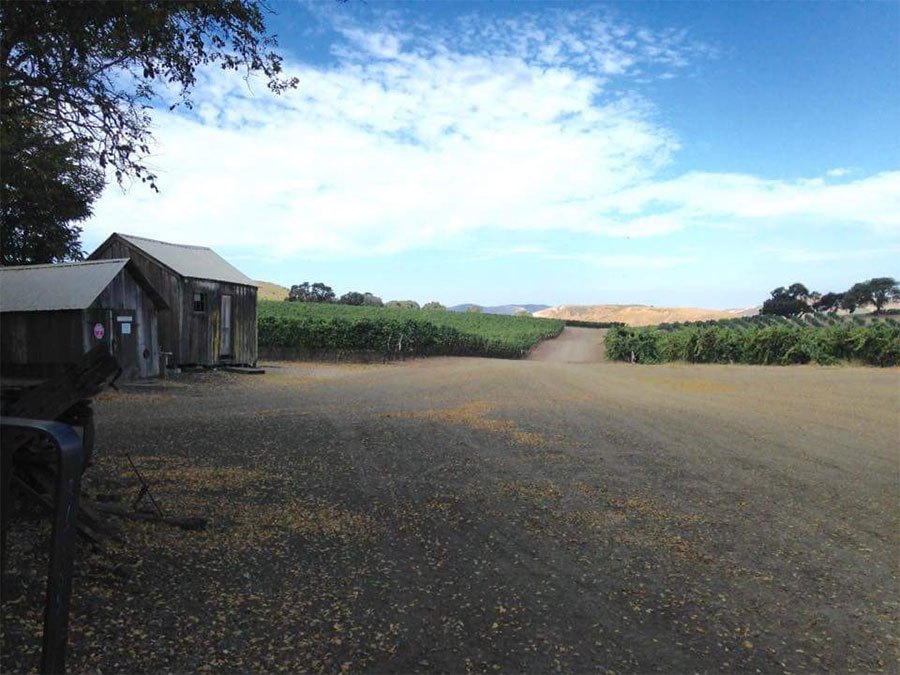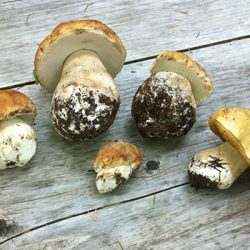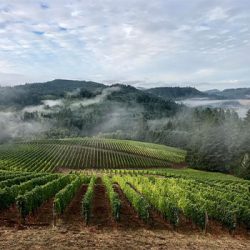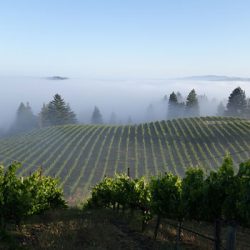Pinot noir from the Sta. Rita Hills caught the attention of our panels with a range of expressions both diverse and dramatic. Such is the nature of an appellation defined by transverse hills and valleys (running east to west), where a few miles can add weeks to bud break, veraison and pick dates.
Wines from three adjacent vineyards south of Santa Rosa Road rose to the top of our tastings: Sanford & Benedict, La Rinconada, and La Encantada. Several producers draw from two of the three (I’ve yet to find a producer who buys fruit from all three, but that winemaker is probably out there). The fruit character at each vineyard is dramatically different, and yet they have clear symbiotic connections.
Sanford & Benedict is the region’s first vineyard, a 150-acre property with plantings going back to 1971; it’s widely considered to be one of the finest places in California for pinot noir and chardonnay here. Richard Sanford and Michael Benedict planted here not because they knew it would be ideally suited for Burgundy varieties, but because it was the only piece of land for sale at the time. Situated on a north-facing slope, the vineyard is inset from La Encatada mesa, whose cliffs shield it from the daily onslaught of ocean winds. Its soils are composed of clay loams and shale, flecked with chert; that clay content brings a water-holding capacity that can translate into wines of exceptional purity and lift.
Au Bon Climat may have the longest relationship with the site; before Jim Clendenen’s death in 2021, he had contracted for pinot noir and chardonnay in more than 30 harvests. Those wines caught the attention of Gavin Chanin, who had apprenticed with Clendenen. “I’ve been working with it since 2004,” says Chanin, “but I think S&B was the first vineyard I saw in my life.” Chanin feels there are still so many things to learn about that property. “You’re lucky if you have two things going for you, like great soil and great climate, the potential to dry farm. Somehow this is more than that. It’s a beautiful mix of everything coming together in one magical place.”
For Ryan Deovlet, Sanford & Benedict has proven to be a vineyard that facilitates his aesthetic, that guarantees power, intensity and purity of flavor without the accumulation of sugars. “You get such great depth of flavor at lower sugar and lower pHs,” he says. “The clay soils, the water retention, all helps the site hold acid in an Old World sense, but it’s California, so you have that kiss of sunshine.”


Photo courtesy of Deovlet
La Rinconada is west of Sanford & Benedict, slightly uphill and still protected by the La Encantada mesa. Still, it probably receives a bit more wind exposure than its neighbor, resulting in exceptional concentration. Chanin says the wines of La Rinconada “always seem more brooding; Sanford & Benedict is usually more refined, elegant, floral. La Rinconada is more masculine, with a darker flavor profile, though, paradoxically, it’s often lighter in color.”
A third vineyard, La Encantada, is farther west, set on the mesa above the other two. The mesa serves as a windscreen for La Rinconada and Sanford & Benedict, a protection that, in effect, defines them. The character of La Encantada, on the other hand, is defined by wind. “It can be nerve-wracking during flowering,” says Deovlet. “You just don’t know what sort of fruit set you’re going to get.” The vineyard is naturally low in vigor, the yields small, the skins thick and the berries tiny. Deovlet is inclined to use whole clusters when fermenting fruit from Sanford & Benedict; with the fruit from La Encantada, he doesn’t need to. “You get this wet-brick note,” he says, speaking of the tannins from the skins.
Matt Brady of Samsara concurs that “the yields at La Encantada are very low. I mean there’s mildew, fog, wind—very challenging maritime conditions—contributing to naturally low yields, thicker grape skins, smaller berries. There’s more color, more structure and tannins, but there’s also richness, density, midpalate weight—there’s more of a core there.”
It’s illuminating, as critics, to taste these wines side by side, especially over the course of a few days. If you can, you should line them up at home, for some perspective on, and pleasure in, Santa Barbara terroir expression.
This feature is published as part of our Regional Tasting Report on US Pinot Noir.
Patrick J. Comiskey covers US wines for Wine & Spirits magazine, focusing on the Pacific Northwest, California’s Central Coast and New York’s Finger Lakes.
This is a W&S web exclusive. Get access to all of our feature stories by signing up today.



















